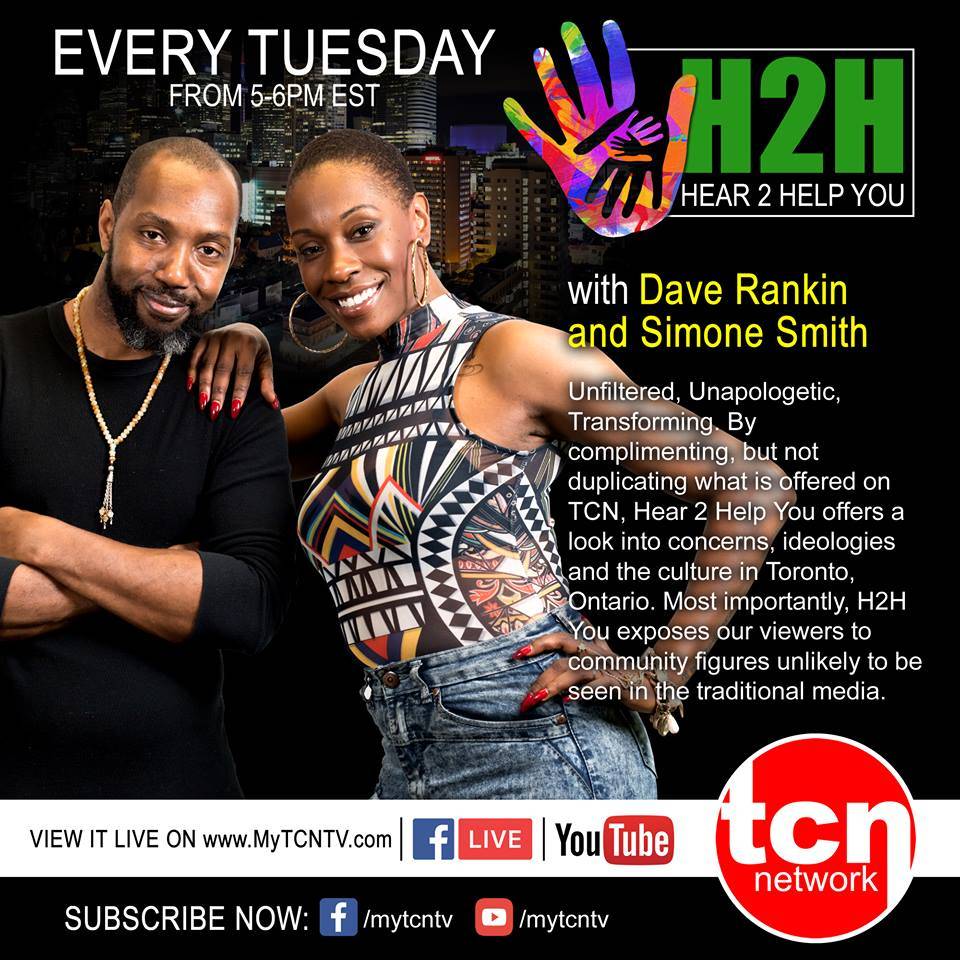MONSTER! MANIPULATOR! – The Psychology of an R. Kelly
- Blog Updates, Hear 2 Help You, Standard Blog
- abuse, addiction, african women, childhood pain, helpless, psychology, R Kelly, sex, sexual abuse, surviving, trauma, victims
- January 10, 2019
Welcome to another week of Hear 2 Help You.
This week’s topic is a highly sensitive one. Pop culture has definitely drew their line in the sand on where they stand with R. Kelly. We all used to jam to his music and we can’t front about that. Sonically, R. Kelly has crafted some of the most amazing music of a lifetime. However, the man behind his music has lived with demons for years that have never been honestly addressed. While we are not using his upbringing as an excuse of his behavior, Mental Health issues still plague our community on all fronts. This is why Simone and I took the time to carefully breakdown the psychology and do our best not to get caught up in our emotions.
What a way to commence the 2019!
[wonderplugin_video iframe=”https://www.youtube.com/watch?v=hP7N0v46-eA&t=35s” videowidth=600 videoheight=400 keepaspectratio=1 videocss=”position:relative;display:block;background-color:#000;overflow:hidden;max-width:100%;margin:0 auto;” playbutton=”http://hear-2-help.com/wp-content/plugins/wonderplugin-video-embed/engine/playvideo-64-64-0.png”]
We started the show by doing a quick review of all of the accusations made by women towards R Kelly:
1994: Marries Aaliyah
 The star, then aged 27, marries 15-year-old singer Aaliyah at a secret ceremony in Chicago. Vibe magazine later discovered that Aaliyah had lied on the wedding certificate about her age, listing herself as 18. The marriage was annulled in February 1995.
The star, then aged 27, marries 15-year-old singer Aaliyah at a secret ceremony in Chicago. Vibe magazine later discovered that Aaliyah had lied on the wedding certificate about her age, listing herself as 18. The marriage was annulled in February 1995.
For the rest of her career, Aaliyah dodged questions about the nature of her relationship. “When people ask me, I tell them, ‘Hey, don’t believe all that mess,'” she told one interviewer. “We’re close and people took it the wrong way.”
1996: Sued for emotional distress
Tiffany Hawkins sues R Kelly for the “personal injuries and emotional distress” she suffered during a three-year relationship with the star.
In court documents, she said she began having sex with Kelly in 1991, when she was 15 and he was 24, and the relationship ended three years later, when she turned 18. According to the Chicago Sun Times, Hawkins sought $10 million in damages, but accepted a fraction of that amount ($250,000) when the case was settled in 1998.
2001: Sued by intern
Tracy Sampson sues R Kelly, accusing him of inducing her “into an indecent sexual relationship” when she was 17 years old.
“He often tried to control every aspect of my life including who I would see and where I would go,” she said in her legal case against him. The case was settled out of court for an undisclosed sum, said the New York Post.
April and May 2002: Two more court cases
Kelly is sued for a third time by Tracy Sampson sues R Kelly who claims he impregnated her when she was underage, and that she was forced to have an abortion.
A woman named Montina Woods also sued Kelly, alleging that he videotaped them having sex without her knowledge. The recording was allegedly circulated on an R Kelly “sex tape” sold by bootleggers under the title R Kelly Triple-X.
The star settled both cases out of court, paying an undisclosed sum in return for a non-disclosure agreement.
June 2002: Charged over child pornography
The star is charged with 21 counts of making child pornography, involving intercourse, oral sex, urination, and other sexual acts. The famous sex tape is what brought these charges on him.
The jury eventually concluded they could not prove that the girl on the tape was a minor, and Kelly was found not guilty on all counts.
2002 – 2004: Arrest prompts further charges
Kelly is charged with a further 12 counts of making child pornography in Florida, where he was arrested at his holiday home. These charges came after police seized a camera during the arrest, which allegedly showed the star having sex with an underage girl. The charges were dropped when a judge agreed with Kelly’s defense team that police lacked sufficient evidence to justify a search.
July 2017: Allegations of a “cult”

Last summer, Buzzfeed published a long and detailed report accusing R Kelly of trapping six women in a sex “cult”.
The article alleged that Kelly seduced young women when they approached him for help with their music careers, before taking control of their lives – dictating “what they eat, how they dress, when they bathe, when they sleep, and how they engage in sexual encounters that he records”.
“I’m not being brainwashed or anything like that,” said 21-year-old Joycelyn Savage in a video call to TMZ. However, she would not reveal where she was speaking from, nor the nature of her relationship with Kelly.
2017 – 2018: Victims approach the press

Buzzfeed’s report prompted further allegations against the star.
Jerhonda Pace broke a non-disclosure agreement to speak about having sex with Kelly while she was underage.
Another woman, Kitti Jones, claimed the star had starved her, coerced her into sexual encounters with other women and physically abused her.
Segment 2 began with highlighting research that showed the effects of sexual assault on adult males are often severe.
Since the 1970s, feminists have done much to publicize the plight of rape victims, and many support services have been developed for women who are coming to terms with the effects of rape and molestation. Ironically however, the publicity that rape has received as a feminist issue has contributed to the isolation experienced by male victims of sexual assault (Mezey & King, 1989).
It is estimated that research, help, and support for male victims is more than 20 years behind that for female victims (Rogers, 1998).
Ignorance and disbelief about male sexual assault has perpetuated myths about this phenomenon in psychology, medicine, and the law (Stermac et al., 1996).
Male rape myths — prejudicial and false beliefs about male sexual assault victims and the perpetrators of such assaults (Struckman-Johnson & Struckman-Johnson, 1992) — stem from the traditional view of masculinity, which dictates that men should be strong, assertive, sexually dominant, and heterosexual (Herek, 1986).
Myths, such as ‘‘men cannot be raped’’ or ‘‘sexual assault is not as severe for a man as it is for a woman’’ minimize the impact of sexual assault on male victims and serve to blame the victim for his assault (Groth & Burgess, 1980).
Some rape crisis workers interviewed during this study appeared to be very negative towards male rape victims. One stated blatantly, ‘‘Honey, we don’t do men . . . Men can’t be raped.’’
Another said, ‘‘Most males that are fondled or sodomized are males that want to be sodomized.’’ Because of such ignorance, the needs of male victims are clearly not met (Sarrel & Masters, 1982).
Some male sexual assault victims feel resentful and angry about their experiences
Surveys of male sexual assault in the community reveal that incidence is surprisingly common
Indeed, it is a myth in society that a woman cannot force a man to have sex (Sarrel & Masters, 1982). Because we are socialized to believe that women are sexually passive and men are the sexual initiators, it is difficult to imagine a dominant woman forcing an unwilling man to have sex (Struckman-Johnson, 1988), or for the man to be unwilling at all if the opportunity for sex occurred.
Negative Reactions
They found that a fifth of the victims who had been assaulted by females had very negative post-assault reactions.
Struckman-Johnson suggested that the males who reported that they did not have severe negative reactions after being sexually assaulted by females might not actually be reflecting the true impact of their assault.
As socialization encourages men to seek and respond to any opportunity to engage in sexual activity with women, sexual coercion by women may be conceptualized as sexual experience (even if that experience is negative) rather than a violation of will.
Victims then interpret the assault as being consistent with their masculine identity and the negative emotional reaction to the assault is minimized.
Long-term problems of male victims also include sexual dysfunction, relationship difficulties.
Lyrics from Song, I admit It, R Kelly
Now, I admit a family member touched me (touched me, touched me, touched me)
From a child to the age 14, yeah
While I laid asleep, took my virginity (sleep, gini’)
So scared to say something, so I just put the blame on me.
There are many issues that need to be addressed in the counseling and treatment of male sexual assault victims (Rogers, 1997). Generating awareness of male sexual assault among counselors is the first step towards developing reliable and useful services for male sexual assault victims. Support services need to be available that are knowledgeable and under- standing of the specific needs of male victims.
I admit I been tempted by drugs
I admit that I just need a hug (I)
I admit the devil talk to me sometimes
But the devil’s not who I trust (yeah, not who I trust)I know y’all look at me like I don’t go through things, but I’m human (human)
I know it’s hard sometimes, but try to keep in mind that I’m human (human)
Impacts of Sexual Abuse
Being a victim of child sexual abuse has been associated with a variety of psychological, social, behavioral and physical problems. Psychological impacts include depression, somatization, PTSD, and personality disorders (Paolucci, Genuis, & Violato, 2001; Putnam, 2003).
Social and behavioral consequences include sexualized behaviors, which may lead to early or unintended pregnancy, or HIV-infection.
Six Variables
There are six variables that can be considered when looking at who perpetrates child sexual abuse:
Family history variables (e.g., history of abuse, parent-child relationship, discipline, attachment)
Externalizing behaviors (e.g., violence, delinquency)
Internalizing behaviors (e.g., depression, low self-esteem, poor coping)
Maladaptive sexual behaviors (e.g., sexual interest in children, deviant sexual fantasies)
Problems in social deficits (e.g., social skills, empathy, loneliness)
Attitudinal/cognitive variables (e.g., attitudes toward rape, rationalizations)
In R Kelly’s case, one likely set of important general risk factors are family/parenting factors. Family risk factors have been identified as playing an important role in the development of various deviant behaviors, including sexual offending (Marshall & Barbaree, 1990; Ryan, 1998)
Let us get a better understanding of R Kelly’s Neuropsychiatry and what it might look like.
Several research reports do suggest that perpetrators of childhood sexual abuse demonstrate abnormalities in the frontal cortex. Frontal impairment and executive dysfunction in pedophiles may underlie behavioral disinhibition.
Kluver-Bucy syndrome, characterized by hyper-sexual behavior among other behavioral disturbances, is linked to bilateral lesions in the temporal lobes.
Then there is the personality component:
Elevated impulsivity may reflect impaired ability to consider the negative consequences of pedophilic behavior.
Sociopathy would imply lack of concern about transgressing social norms and the well being of the victims. Sociopathic traits are one of the most consistent findings in personality studies of pedophiles
Finally a propensity to cognitive distortions would reflect distorted evaluation of the implications of pedophilic behavior.
The Signs of Molestation
Childhood Sexual History
One etiological theory of pedophilia holds that pedophiles are “abused abusers,” such that their own history of childhood abuse may contribute to motivation to commit pedophilic acts.
The incidence of childhood sexual trauma in pedophiles may be higher than that in other sexual offenders
Results suggest that human subjects with histories of pedophilia as compared with non-pedophilic controls may have persistent abnormalities in brain function and specifically decreased glucose metabolism in the temporal and frontal cortices brain areas implicated in cortical regulation of sexual arousal
Most programs for the prevention of child sexual abuse have focused on potential victims, teaching them to avoid child molesters. Such programs can be important, but they are likely only part of a broad solution.
Programs focusing on potential victims put much of the prevention burden on the child, who may have limited ability to engage in prevention behaviors. Moreover, relatives perpetrate most child sexual abuse and acquaintances, which makes it particularly difficult for children to control these interactions.
Warning Signs of Possible Sexual Assault on Children
- Has nightmares or other sleep problems without an explanation
- Seems distracted or distant at odd times
- Has a sudden change in eating habits
- Refuses to eat
- Loses or drastically increases appetite
- Has trouble swallowing.
- Sudden mood swings: rage, fear, insecurity or withdrawal
- Leaves “clues” that seem likely to provoke a discussion about sexual issues
- Writes, draws, plays or dreams of sexual or frightening images
- Develops new or unusual fear of certain people or places
- Refuses to talk about a secret shared with an adult or older child
- Talks about a new older friend
- Suddenly has money, toys or other gifts without reason
- Thinks of self or body as repulsive, dirty or bad
- Exhibits adult-like sexual behaviors, language and knowledge
Signs more typical of younger children
- An older child behaving like a younger child (such as bed-wetting or thumb sucking)
- Has new words for private body parts
- Resists removing clothes when appropriate times (bath, bed, toileting, diapering)
- Asks other children to behave sexually or play sexual games
- Mimics adult-like sexual behaviors with toys or stuffed animal
- Wetting and soiling accidents unrelated to toilet training
Signs more typical in adolescents
- Self-injury (cutting, burning)
- Inadequate personal hygiene
- Drug and alcohol abuse
- Sexual promiscuity
- Running away from home
- Depression, anxiety
- Suicide attempts
- Fear of intimacy or closeness
- Compulsive eating or dieting
Physical warning signs
Physical signs of sexual abuse are rare. If you see these signs, bring your child to a doctor. Your doctor can help you understand what may be happening and test for sexually transmitted diseases.
- Pain, discoloration, bleeding or discharges in genitals, anus or mouth
- Persistent or recurring pain during urination and bowel movements
- Wetting and soiling accidents unrelated to toilet training
What You Can Do If You See Warning Signs
- Create a Safety Plan. Don’t wait for “proof” of child sexual abuse.
- Look for patterns of behavior that make children less safe. Keep track of behaviors that concern you. This Sample Journal Page can be a helpful tool.
- See our Let’s Talk Guide book for tips on speaking up whenever you have a concern.
References
Risk factors for the perpetration of child sexual abuse: A review and meta-analysis
Daniel J. Whitakera,∗, Brenda Lea, R. Karl Hansonb, Charlene K. Bakerg, Pam M. McMahonc, Gail Ryand, Alisa Kleine, Deborah Donovan Ricef
Heterosexual Male Perpetrators of Childhood Sexual Abuse: A Preliminary Neuropsychiatric Model
Lisa Janet Cohen & Igor I Galynker
Male Sexual Assault Victims; A Selective Review of Literature and Implication for Support Services
Michelle Lowe
Article in Aggression and Violent Behavior, May 2002


